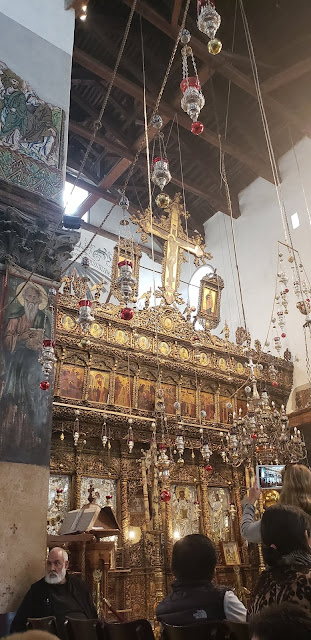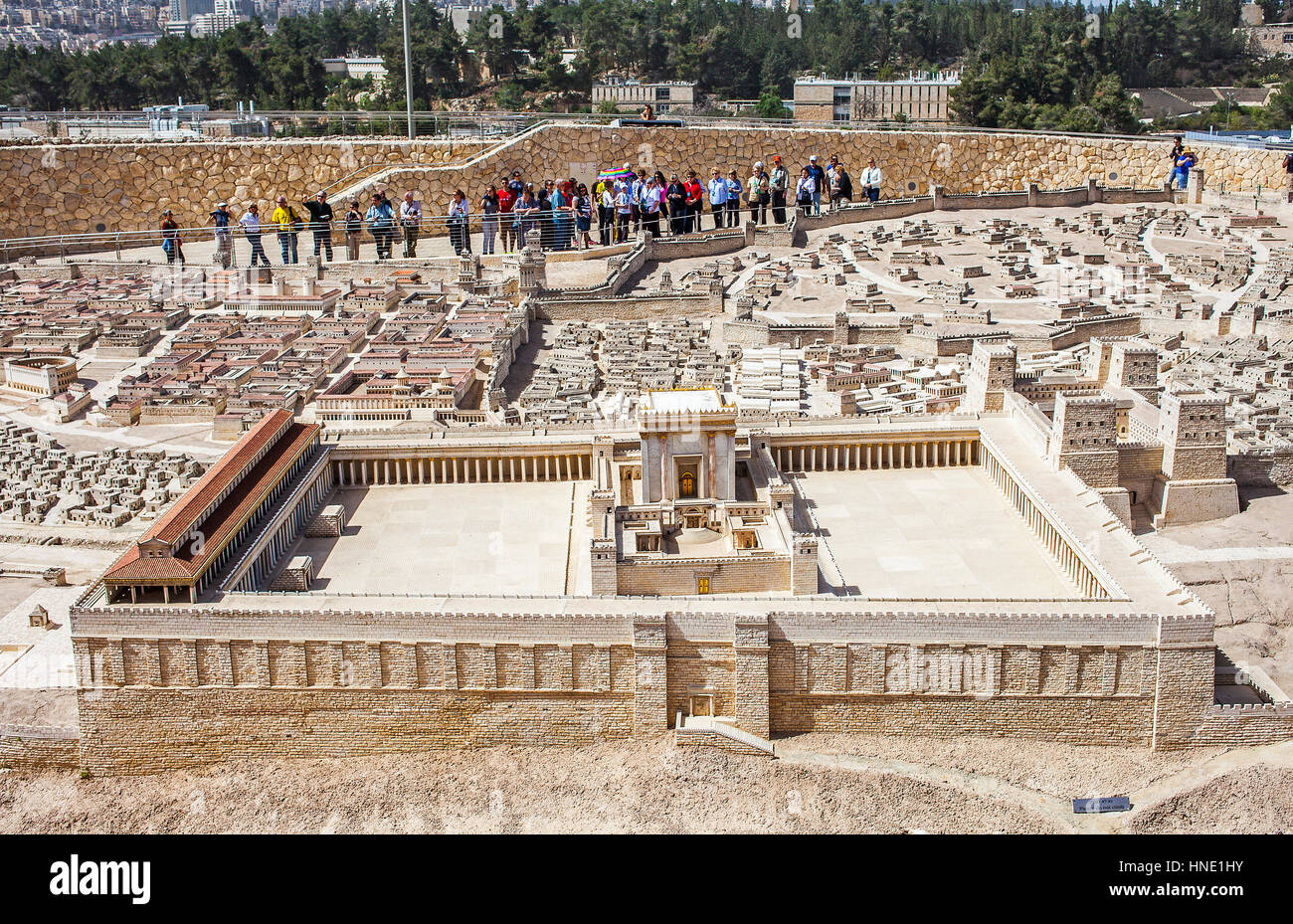So slowly am I moving through the days of my trip in November-December 2018 in these pages. It already feels as if the trip itself happened in another lifetime. Still, after more than a week with a tenacious cold/flu in which my only focus was on how bad I felt--that left little room for prayerful contemplation (or there was room and I simply was unable to accept the Grace), I think I need the reminder of a part of my late trip in which I first felt the stirrings of God's Presence in the place where He walked. It was at the Church of All Nations, also known as the Basilica of the Agony.
The Trip to Gethsemane came at the end of a day of whirlwind spiritual archaeological spin through the Church of the Nativity, St. Joseph's Chapel, Manger Square about which I anticipate I will write in later entries. We arrived at the portico and entrance of the Church as the gloaming descended on the Kidron Valley. We stood to hear the history of the place at the third arch from the left, the building itself actually of 20th century design and build but known to be in the precise area where Jesus waited for his betrayer and the Roman soldiers to take him to Calvary and where He prayed for deliverance before accepting that His portion was the salvation of the world. This picture is not one of mine, but I wanted to give a sense of where I was looking from as evening descended.
 |
The Church of All Nations/Basilica of the Agony.


 |
I could see back across to the Walls of Jerusalem, to the Temple Mount, to the place where legend has it, Suleiman, sealed up the Eastern Gate to keep the Messiah from coming (silly Suleiman!) We were reminded that at the time of Jesus, Olive Trees were everywhere--what we saw were relatively few, though presumably some of 1000 or more years endurance.
From His perspective, Jesus would have seen the soldiers coming for Him, as the only light would have been their torches. He could have escaped at any time, but after His prayer, He was committed to a death that would transform Death.
Up to this point in the trip, this being the second full day, I had experienced an intellectual awe, if you will, but I had not really felt anything other than overwhelmed by the having old vague images of places I knew of since childhood become real. And yet they still required imagining as all the building over building over building of generations of conquerors and pilgrims had obscured where the events unfolded. This was the first place where I still could see essentially what Christ might have seen from that hill. At least my imagining was more connected to the topography. But still no feeling, as if feeling is proof of faith--it is not of course. Faith is an act, a regularly repeated act, of assent. It is saying and meaning "I believe" especially when feeling has abandoned you. I am amused so often when people say that religion is for the simple minded, the not so rational. It is the hardest thing, to assent to faith, when all around you is denying its validity. The subject for another reverie perhaps.
Anyway, when we entered towards the altar, there was this rock, surrounded by a thick black small fence molded into a series of Crowns of Thorns. I could barely see it for the people who were surrounding it, a Korean group of women I think, praying, and singing. We were able to merge into the pews behind them. "This isn't THE ROCK, of course, I thought to myself. Well, anyway, how do we know that it is one way or the other?" But I was satisfied to be there. There are certain mysteries of the rosary I particularly favor, to the extent that I pray the rosary, which is not often enough--I have my periods of regular praying of it, and then my fervor dissipates. Of the Sorrowful Mysteries, the time of Our Lord's terror and loneliness in Gethsemane is one. We all have things we don't want to face. And I have resonated with the begging to be spared that which I most fear and then realizing that it isn't going to happen. He is, in that moment, as human as I am every day of my life.
I wasn't thinking about the Rosary particularly or my affection for that Mystery, as I sat behind the women. I did have the feeling that I couldn't, or shouldn't go any where near the rock, that I didn't deserve to be closer than I was, whether it was THE rock upon which Christ sweated blood or not.
Then the women began to sing.
https://www.facebook.com/DjinnfromtheBronx/videos/10218924931373802/?t=33
And I began to cry. When I watch the video of it, which I seem unable to post, though I hope this link to Facebook for December 24, 2018, will bring you to it, I cry again. I am transported to that spot, again. I am certain that I should never give up assenting to my faith.There is no explaining this. And even if there were, the explanation is, as Paul said, foolishness to some and a stumbling block to others. Perhaps every day I should look at this video to remind myself not to see foolishness or to stumble more than I do.
And then, when the women stopped singing and I was still crying, two of them turned around, and each, without any words, hugged me. Any who know me are aware I am not comfortably hugged. Something old and unaddressed still makes that a bug a boo. I'll do it, if it is initiated, but it does not come naturally or without great self-consciousness. And yet. When these two strangers hugged me, I felt safe, and warm and grateful. I saw Christ in these strangers I would never meet again.












































